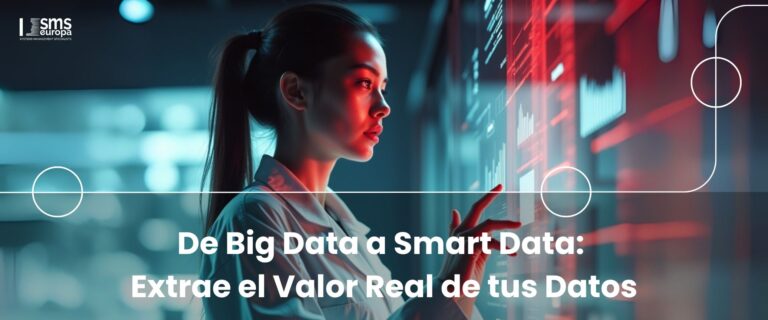In the era of Big Data, companies have become accustomed to accumulating enormous volumes of information. However, the real competitive advantage no longer lies in quantity, but in the ability to transform that massive data into useful and actionable intelligence. This evolution, which we call Smart Data, focuses on the quality and relevance of information to gain valuable insights and make strategic decisions.
Why Quality Beats Quantity?
Big Data, with its 5 Vs (Volume, Velocity, Variety, Veracity, and Value), laid the foundation for the analysis of large data sets. However, the main challenge is data veracity. Poor-quality information can lead to erroneous conclusions, wasted time and resources, and counterproductive business decisions.
The concept of Smart Data invites us to change our approach: instead of collecting everything, we should focus on what really matters. This involves a process of cleaning, validating, and contextualizing information to ensure that it is accurate, relevant, and useful for our objectives.
Techniques for Obtaining Actionable Intelligence
To move from a sea of data to a set of intelligent information, it is crucial to implement techniques that help us extract real value.
- Defining Clear Objectives: Before beginning any analysis, it is essential to know what questions we want to answer. What business problem are we trying to solve? What decisions do we need to make? By defining clear objectives, we can focus on the data that is truly relevant.
- Data Cleaning and Normalization: Raw data often contains errors, duplicate values, or inconsistent formats. Data cleaning is an essential step in eliminating these inconsistencies and normalizing the information, ensuring its accuracy.
- Segmentation and Contextualization: Not all data has the same value. Segmenting information by interest groups (e.g., customers, products, geographies) and contextualizing it (analyzing it in a specific environment) allows you to discover patterns and trends that would not be visible in a global analysis.
- Predictive and Prescriptive Analytics: Once we have clean and relevant data, we can apply advanced techniques such as predictive analytics (which predicts future outcomes) and prescriptive analytics (which recommends actions to optimize those outcomes). For example, in the fashion industry, Smart Data can predict demand for a garment and prescribe which marketing actions are most effective for each customer segment.
In summary, the future of data analytics lies not in the amount of information accumulated, but in the intelligence extracted from it. Moving from Big Data to Smart Data is the way to transform data into the most valuable asset of any organization.
At SMS Europa, we understand the importance of this paradigm shift. Are you ready to leave the noise behind and start listening to what your data really has to say?

